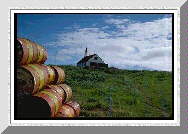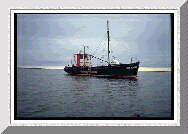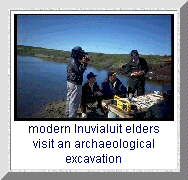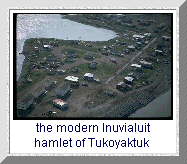


Survival (Postscript)
Somehow the Inuvialuit survived, and with better medical facilities, some very hard-won natural immunities, and a great deal of Nunatamiut and more exotic inter-marriage the population has rebounded to about 3000 people, probably a few more than lived in the area at the time of European contact a hundred and fifty years ago.




Most if not all modern Inuvialuit are of mixed Alaskan and local descent, although some families and communities identify more with one heritage than the other. The aboriginal Inuvialuit dialect (Siglitun), for instance, survives best in the more easterly communities like Tuktoyaktuk, Paulatuk, and Sachs Harbour, while the dialect of the Alaskan newcomers - Uummarmiutun - is spoken primarily in Aklavik and Inuvik. 

Recently these five communities, along with the Central Arctic hamlet of Holman on Victoria Island, have joined together in a land claim agreement with the Canadian federal government. Called the Inuvialuit Final Agreement, it was signed in 1984 and governs essentially the entire Western Canadian Arctic. For the first time in this century, the Inuvialuit once more rule their own land. 

[Opening Page | The Land | The People | From Ancient Times | ...To 1902 | Survival |About the Researcher]